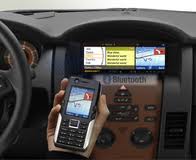 There’s a famous quote that questioned the need for anybody to have or need a computer at home. 3 billion computers later… now let’s not make the same mistake when it comes to cars, trucks and a commercial fleet. Today there is a greater understanding in the need for streamlining business management avenues.
There’s a famous quote that questioned the need for anybody to have or need a computer at home. 3 billion computers later… now let’s not make the same mistake when it comes to cars, trucks and a commercial fleet. Today there is a greater understanding in the need for streamlining business management avenues.
A real terms value is seen in merging and ensuring systems operate and work together, this is especially true when it comes to telematics. Vehicle Telematics is a service provided by a third party, quite often by insurance companies offering you the chance to lower your insurance premiums on your car or vehicle of use.
A Brief Overview Of Vehicle Telematics
In the 1980’s GPS was released from the grasp of America’s military and given to the world by the American government. In those thirty years various versions and satellites have been set up, giving us today’s global tracking abilities via satellite.
Insurance groups now use this technology to help them further assess the risk of the insured by monitoring their in-vehicle and on the road activities. Anything from speed to time of driving offering reports back on fuel consumption, road safety and the ability to track a number of elements that would otherwise be guesswork or unknown.
The comparison to be made with Telematics and the software used before its inauguration by the insurance companies is thus; previously software supplied by an insurer to a fleet manager would help plan schedules, assist in the planning of routes, help monitor fuel consumption and keep a record of scratches, bumps and accidents so you knew which drivers cost the company the most money. All of this was manual work with charts and data entered weekly.
Informatics Offers Business Savings When In Real Time
Now fleet managers have very little work to do in this regard, as all that software comes inbuilt within a telematics device placed in the dashboard of every vehicle in the fleet. There’s no need for manually edited charts or awaiting uploaded data. All the information is live and viewable by both business, fleet manager, driver and insurer. So already you’re saving a lot of time thanks to an automated on board computer calculating everything in-running.
There are however a lot more ways that vehicle telematics assist in saving a business money. Not only should individual and fleet driver insurance payments come down, but as drivers become more knowledgeable, aided by additional informatics and instant telecommunications, coupled with gps tracking and sat nav read outs. A company can save money when it comes to less fuel consumption, a reduced rate on the carbon footprint and business taxes.
Also as all data is live, the fleet manager can assess routes and timings, speed and driving attitudes and seek to find savings by re-running the route through an online device such as Google Street Viewhard and try best to bring down costs and times of delivery further. A reduction in business costs and a fall in claims in the fleet means lower insurance premiums and a business making more profit.
As well as driver behaviour, route checks and real time related logs for customers online updated effectively thanks to traffic event management. You can also better oversee repairs, service and on the road maintenance with all the information live and at your fingertips. With the added bonus of being able to plug in an Ecall unit, a roadside recovery service which, if activated, will automatically save time and send relevant vehicle data to the recovery truck.
Vehicle telematics is simply the 21st century solution for fleet management. While hoping to reduce your insurance premiums by way of an interactive and live knowledge swap. You can also run your fleet of vehicles more efficiently and respond to problems as they arise and possibly before they occur. All of which saves your company money across the board.











Leave a Reply